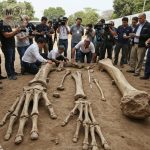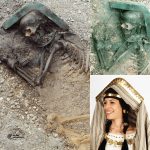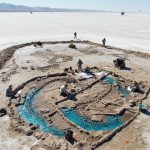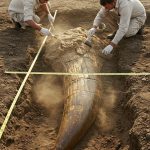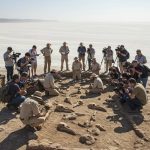Alien Skeletons in Egypt: Unearthing the Unthinkable
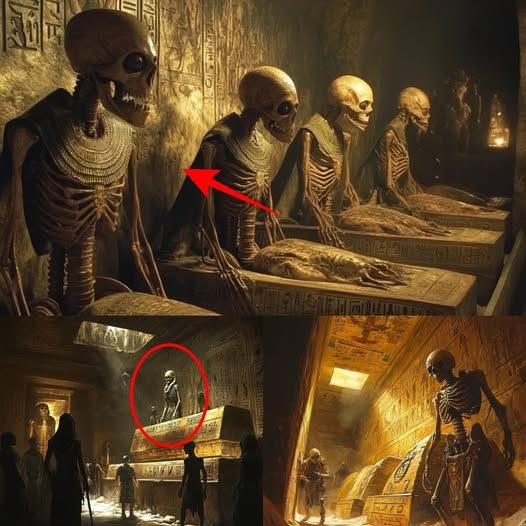
Egypt’s deserts have long concealed secrets of extraordinary civilizations, from the grandeur of the pyramids to the tombs of forgotten pharaohs. But a recent claim has pushed the boundaries of archaeology and myth alike: the alleged discovery of elongated, non-human skeletons buried beneath the shifting sands. With oversized skulls, slender limbs, and proportions unlike any human remains ever catalogued, these figures have ignited one of the most controversial debates in modern history. Are they evidence of a lost branch of humanity, or could they represent something far more unearthly?
The Alleged Tomb of the Unexplained

Reports describe a hidden chamber deep within the Egyptian sands, containing skeletal remains that challenge all known classifications. Unlike traditional mummies or human fossils, these figures bear features often associated with extraterrestrial imagery—elongated craniums, unusually thin bones, and proportions that defy conventional anatomy. For many, the immediate comparison is striking: could these skeletons represent the “gods from the stars” referenced in ancient myths and hieroglyphs?
The discovery has stirred excitement not only among fringe theorists but also among mainstream researchers, though the latter urge caution. Skeptics suggest the skeletons could represent natural deformities, ancient medical anomalies, or even deliberate cranial shaping practices known in various cultures. Yet none of these explanations fully account for the proportions described.
Myth, Misinterpretation, or Truth?
Egypt has always inspired speculation about connections to otherworldly beings. From the Great Pyramid’s astronomical alignments to myths of gods descending from the heavens, the culture seems intertwined with celestial themes. To believers, the alleged skeletons fit perfectly into this narrative, offering physical “proof” that ancient Egyptians may have encountered or worshipped beings not of this Earth.
However, archaeologists emphasize the importance of evidence. Extraordinary claims require extraordinary proof, and until peer-reviewed studies, carbon dating, and DNA testing are conducted, the skeletons remain in the realm of speculation. Misidentifications are common in archaeology, and myths often grow from misunderstandings of unusual discoveries.

Why the Mystery Persists
The fascination with Egypt’s alien connection endures because it feeds into humanity’s deepest questions: Where did we come from? Are we alone in the universe? And could ancient civilizations have interacted with beings beyond our world? Even if the skeletons turn out to have natural explanations, their discovery keeps alive the dialogue between science and imagination, fact and folklore.
Moreover, the very idea of alien remains hidden in a tomb resonates with global myths of “sky gods” and otherworldly visitors. Whether literal or symbolic, these stories reflect a universal curiosity about the stars and their influence on human history.
Conclusion
The alleged discovery of alien skeletons in Egypt is more than an archaeological curiosity—it is a spark that reignites age-old debates about human origins, lost knowledge, and our possible connection to the cosmos. Whether myth, misinterpretation, or hidden truth, the mystery endures, reminding us that history often holds more questions than answers. Until science delivers definitive conclusions, the sands of Egypt will continue to guard their secrets, blurring the boundary between legend and reality.
